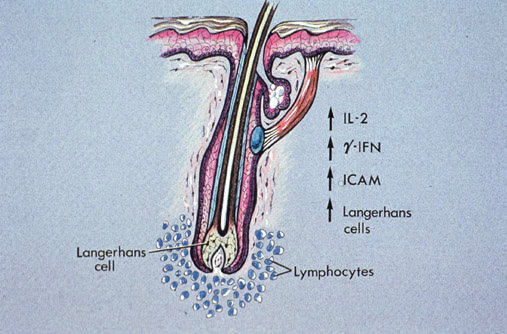
The pathogenesis of alopecia areata. Antigen-presenting cells, such as Langerhans
cells, are increased in the bulb of the affected follicles. They present the
responsible epitope to the peribulbar lymphocytes. This leads to a cascade of
immunologic events with increased interleukin-2 (IL-2), gamma interferon (gamma IFN) and
intercellular adhesion molecules (ICAM). This series of events helps to induce hair
loss. This is considered to be a Type I helper T-cell response (Th1).